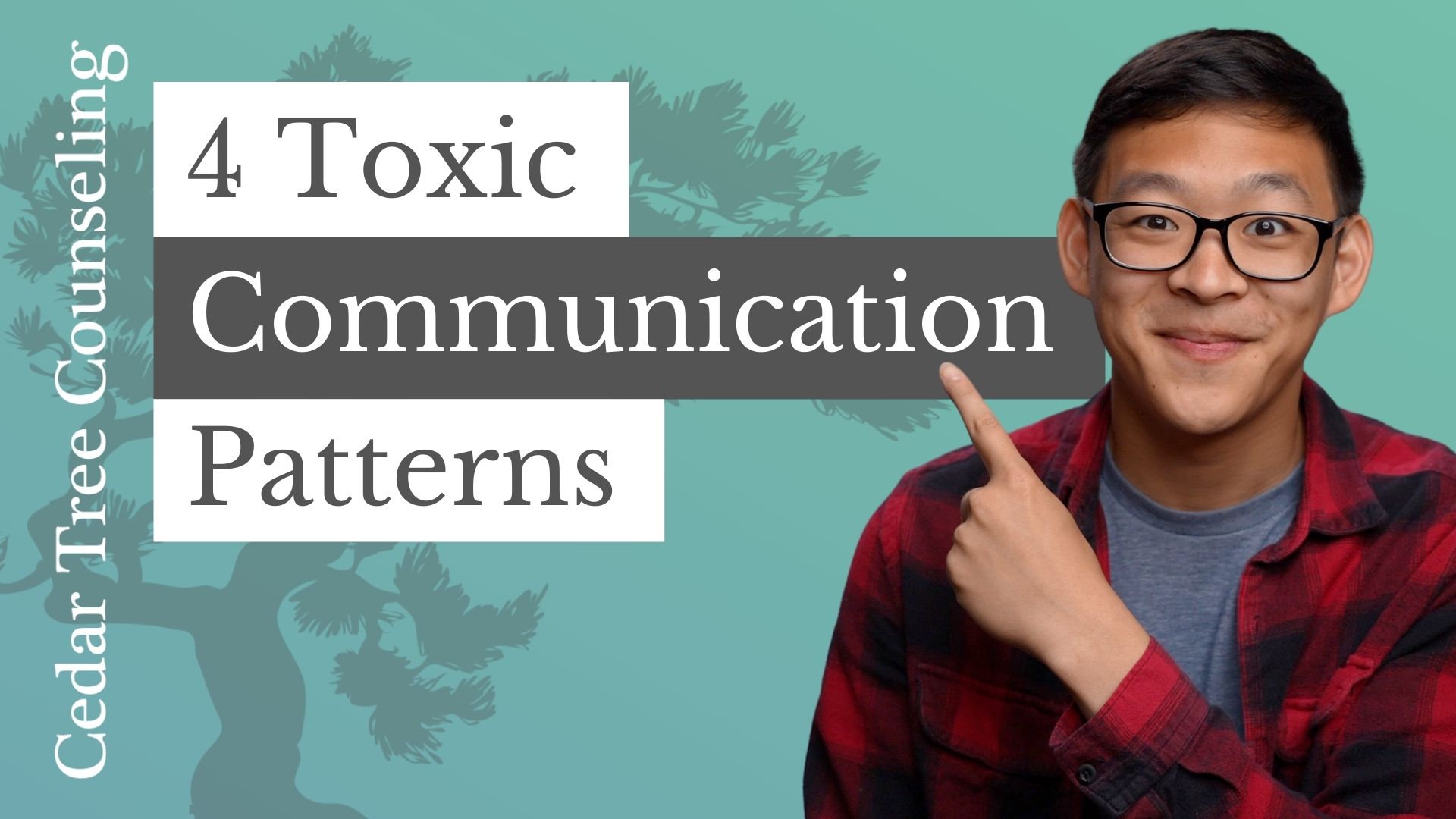Toxic Communication Patterns: Break Free for Better Relationships
Communication is key in relationships. But not all communication is healthy.
Toxic communication patterns can harm relationships and leave lasting impacts. They often go unnoticed until they cause significant damage. Understanding these patterns is crucial. It helps in recognizing and addressing them before they escalate. Toxic communication can manifest in various forms.
Sarcasm, criticism, or constant interrupting are some examples. These behaviors create a hostile environment. They hinder effective communication and mutual respect. Recognizing toxic patterns early can save relationships. It can also promote healthier interactions. By addressing these issues, individuals can foster understanding and empathy. This blog will explore different toxic communication patterns. It will also provide tips on how to overcome them. Stay tuned to learn more about creating a healthier communication environment.
Identifying Harmful Communication
Communication shapes our lives and relationships. It’s essential to recognize when it turns toxic. Harmful communication patterns can damage trust, create misunderstandings, and lead to conflicts. Identifying these patterns is crucial for maintaining healthy relationships. By understanding the signs, individuals can take steps to improve their interactions.
Signs Of Toxicity
Recognizing toxic communication is the first step. Look for frequent criticism or blame. Does one person always dominate conversations? Interruptions can also signal toxicity. Emotional manipulation is another red flag. Pay attention to passive-aggressive comments. These often mask true feelings. Sarcasm can be harmful, too, especially if used to belittle.
Impact On Relationships
Toxic communication erodes trust over time. It creates a hostile environment. Partners may feel misunderstood or undervalued. Miscommunication becomes common, leading to constant conflicts. Relationships suffer as negativity takes hold. Emotional distance increases, making reconciliation hard. Healthy dialogue becomes rare. Over time, bonds weaken, and individuals drift apart.
Common Toxic Patterns
Toxic communication patterns damage relationships by fostering misunderstandings and resentment. Common patterns include sarcasm, silent treatment, and constant criticism. Recognizing these habits helps in building healthier interactions and emotional connections.
Toxic communication patterns can silently erode relationships, leaving behind a trail of confusion and mistrust. These patterns often slip into our interactions without us even noticing. Recognizing them is the first step toward healthier communication. Let’s dive into some common toxic patterns that might be affecting your conversations.Passive Aggression
Passive aggression is a sneaky way of expressing anger or discontent. Instead of addressing issues directly, you might find yourself using sarcasm or giving the silent treatment. Imagine you’re upset with a friend but instead of telling them, you respond with, “Sure, whatever you say,” in a tone that drips with sarcasm. This leaves your friend guessing, unable to fix the issue. Address your feelings openly. Ask yourself: Is avoiding confrontation worth the confusion?Gaslighting
Gaslighting is a manipulative tactic that makes you question your reality. Have you ever been told, “You’re being too sensitive,” when sharing your concerns? This can make you doubt your feelings and perceptions. It’s like being in a maze where someone insists the path you’re seeing doesn’t exist. Stay confident in your experiences. Validate your feelings before letting anyone dismiss them. Would you let someone tell you the sky isn’t blue? By identifying these patterns, you can take steps to communicate more effectively. Each interaction is an opportunity to build trust and understanding. Which pattern have you noticed in your conversations today?Overcoming Toxicity
Communication is key in relationships. Toxic patterns can harm connections. Recognizing and overcoming these patterns is essential for healthy interactions. It involves understanding oneself and adopting positive communication habits. Let’s dive into ways to overcome communication toxicity.
Developing Self-awareness
Self-awareness is the first step. Recognize your role in communication. Understand your triggers and responses. Reflect on past interactions. Learn from them. Ask yourself, why did you react a certain way? This helps identify patterns. Journaling can aid in reflection. Write down your thoughts and feelings.
Practice mindfulness. It keeps you present. Aware of your emotions. Meditation can help with this. Ten minutes a day makes a difference. Mindfulness reduces impulsive reactions. Encourages thoughtful responses.
Building Healthy Habits
Healthy communication requires practice. Start by setting clear boundaries. Respect others’ limits. They should respect yours. Use “I” statements. Express how you feel. Avoid blame. It helps prevent defensiveness.
Listen actively. Pay attention to the speaker. Show empathy. Validate their feelings. It builds trust. Practice patience. Avoid interrupting. Let the other person finish speaking. Respond with kindness. Use positive language. Encourage open dialogue.
Seek feedback. Ask friends or colleagues. They can offer insights. Feedback helps improvement. It keeps communication honest. Attend workshops or read books. They offer strategies for better communication. Continuous learning fosters growth.

Credit: cedartreecounseling.com
Effective Communication Strategies
Have you ever felt stuck in a conversation where words seemed to fly by without truly connecting? Toxic communication patterns can often lead to misunderstandings and frustration. But there’s hope! Effective communication strategies can transform your interactions, making them more meaningful and productive. By embracing techniques like active listening and assertive expression, you can enhance your conversations and foster healthier relationships.
Active Listening Techniques
Active listening is more than just hearing words; it’s about truly understanding the speaker’s message. Try nodding or using small verbal cues to show you’re engaged. Reflecting back what you’ve heard can also be powerful. Saying something like, “So, you’re saying…” helps confirm the message and shows empathy.
A friend once told me about a heated argument with her colleague. She realized she wasn’t really listening, just waiting for her turn to speak. When she started actively listening, the conversation shifted. They found common ground and resolved their issue. Have you ever caught yourself in a similar situation?
Ask questions that clarify. If something’s unclear, don’t hesitate to ask for more details. This not only helps you understand better but shows the speaker you care about their perspective.
Assertive Expression
Expressing yourself assertively means being honest and direct while respecting others. It’s about stating your needs clearly without aggression. Using “I” statements can be effective. Instead of saying “You never listen,” try “I feel unheard when you interrupt.”
A colleague once struggled with a demanding boss. She felt overwhelmed but was hesitant to speak up. When she finally expressed her feelings assertively, her boss was surprisingly receptive. They worked together to adjust her workload. How might assertive expression change your work dynamics?
Set boundaries confidently. It’s okay to say no or ask for a pause in a conversation if needed. This ensures your needs are respected and reduces the chance of miscommunication.
Consider these strategies next time you’re in a conversation. They might just change how you connect with others.
Strengthening Relationships
Strengthening relationships requires effort and attention to communication patterns. Toxic communication can damage trust, causing misunderstandings and conflict. By focusing on healthy communication, relationships can grow stronger and more fulfilling.
Fostering Trust
Trust is the foundation of any strong relationship. Honest and transparent communication builds trust. Share thoughts and feelings openly. This practice creates a safe space for both partners. Avoid criticism and blame. Instead, focus on positive reinforcement and understanding.
Listening is as important as speaking. Give full attention when others talk. This shows respect and helps in building trust. Trust grows when people feel heard and valued.
Encouraging Open Dialogue
Open dialogue is key to understanding each other better. Encourage sharing of ideas and opinions without fear. Avoid interrupting during conversations. Let the other person express fully. This creates a balanced exchange.
Use “I” statements to express feelings. It reduces defensiveness in discussions. For example, say “I feel upset” instead of “You make me upset.” This approach fosters a more open and honest dialogue.

Credit: www.kylielepri.com.au

Credit: thepowermoves.com
Frequently Asked Questions
What Are The 4 Toxic Communication Styles?
The four toxic communication styles are criticism, contempt, defensiveness, and stonewalling. Criticism attacks character, contempt shows disrespect, defensiveness avoids responsibility, and stonewalling withdraws from interaction. These behaviors damage relationships and hinder effective communication.
What Are The Four Toxic Forms Of Communication?
The four toxic forms of communication are criticism, contempt, defensiveness, and stonewalling. Criticism attacks character, contempt shows disrespect, defensiveness avoids responsibility, and stonewalling withdraws from interaction. These behaviors can harm relationships and hinder effective communication.
What Are The 4 Communication Toxins?
The four communication toxins are criticism, contempt, defensiveness, and stonewalling. Criticism attacks character; contempt shows disrespect. Defensiveness avoids responsibility, and stonewalling withdraws from interaction. These behaviors harm relationships and hinder effective communication. Understanding and addressing them can improve interpersonal connections.
Conclusion
Recognizing toxic communication patterns is crucial for healthy relationships. These patterns can harm connections and lead to misunderstandings. Changing the way we communicate helps build trust and respect. Simple, clear conversations make a big difference. Practicing good listening can improve your interactions.
Remember, every small step counts in fostering better communication. Encourage open discussions and address issues calmly. This approach strengthens bonds and creates a positive environment. With patience and effort, toxic patterns can be overcome. Healthy communication is key to happier relationships.
Make it a priority in your daily life.


